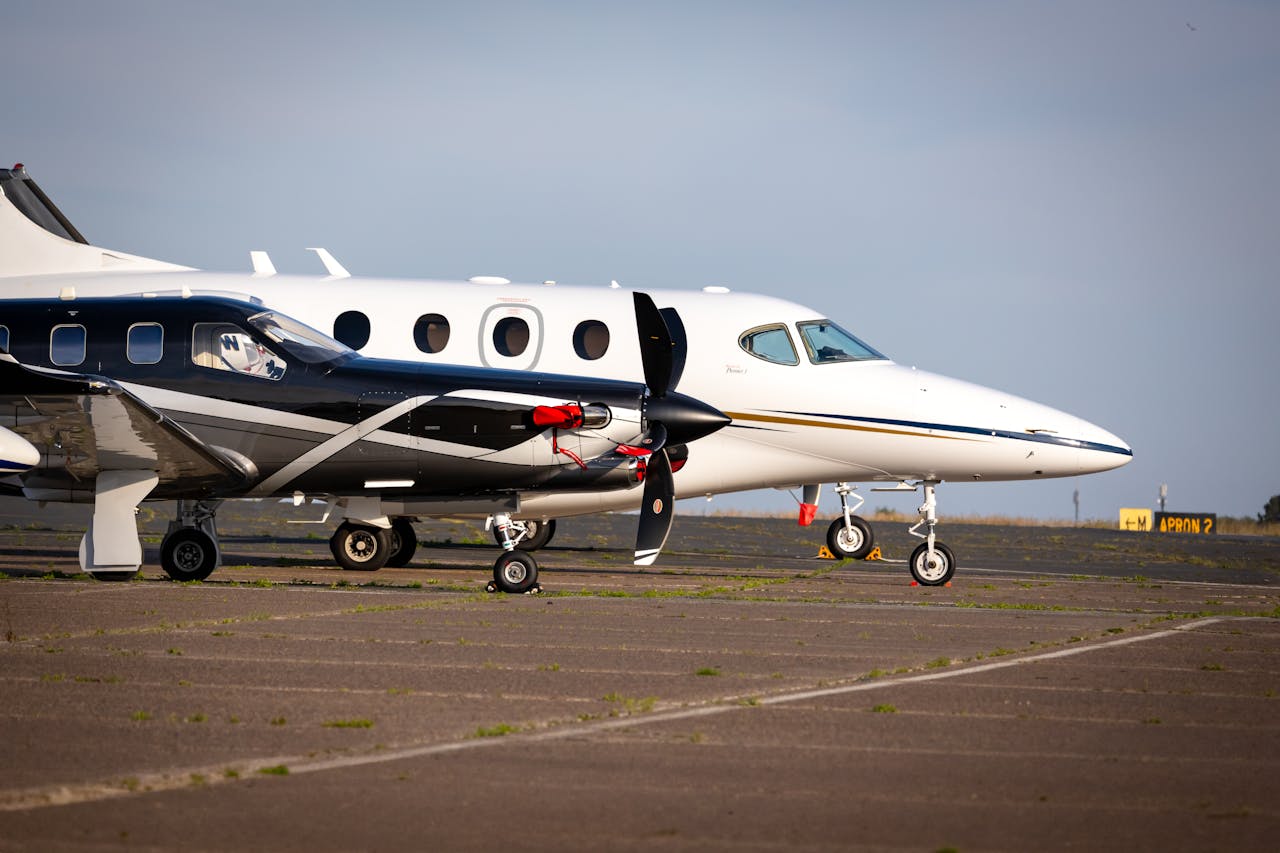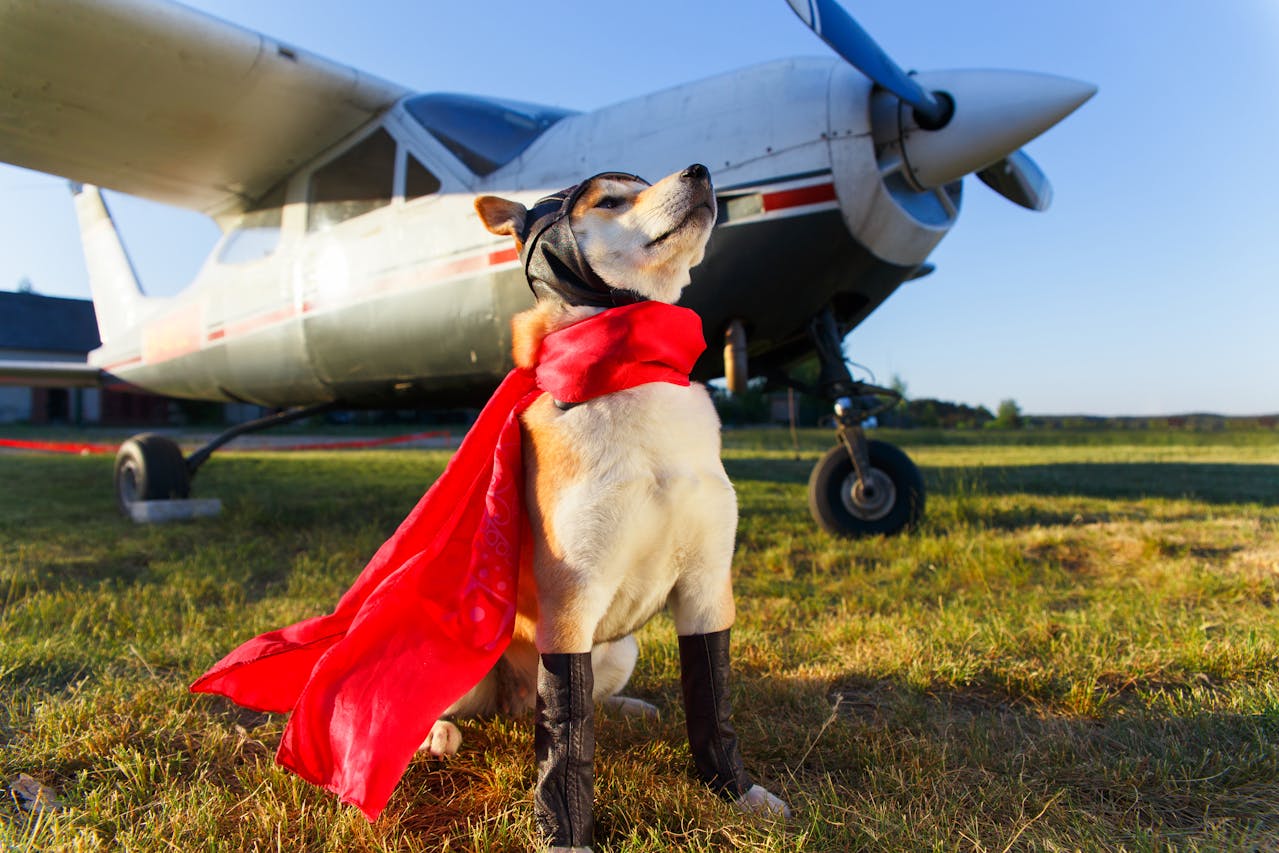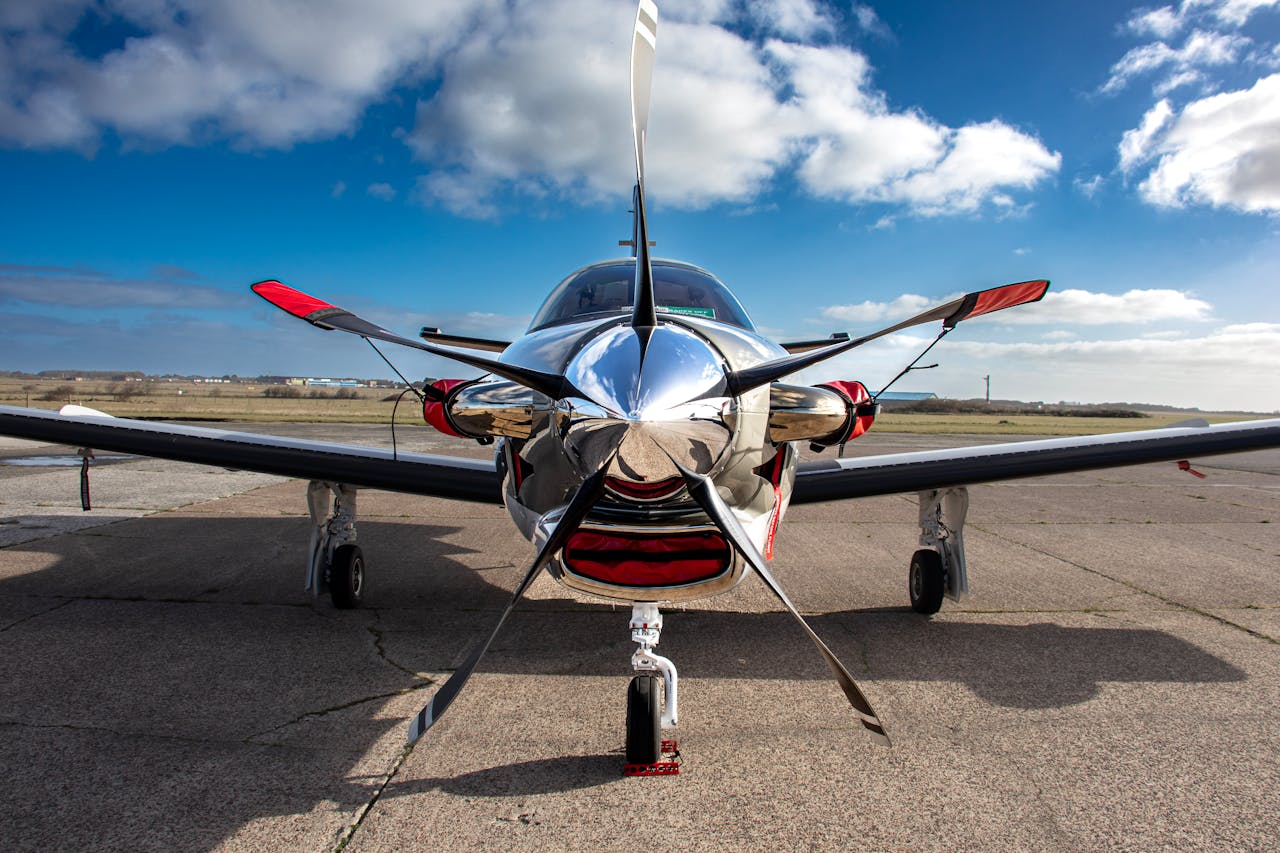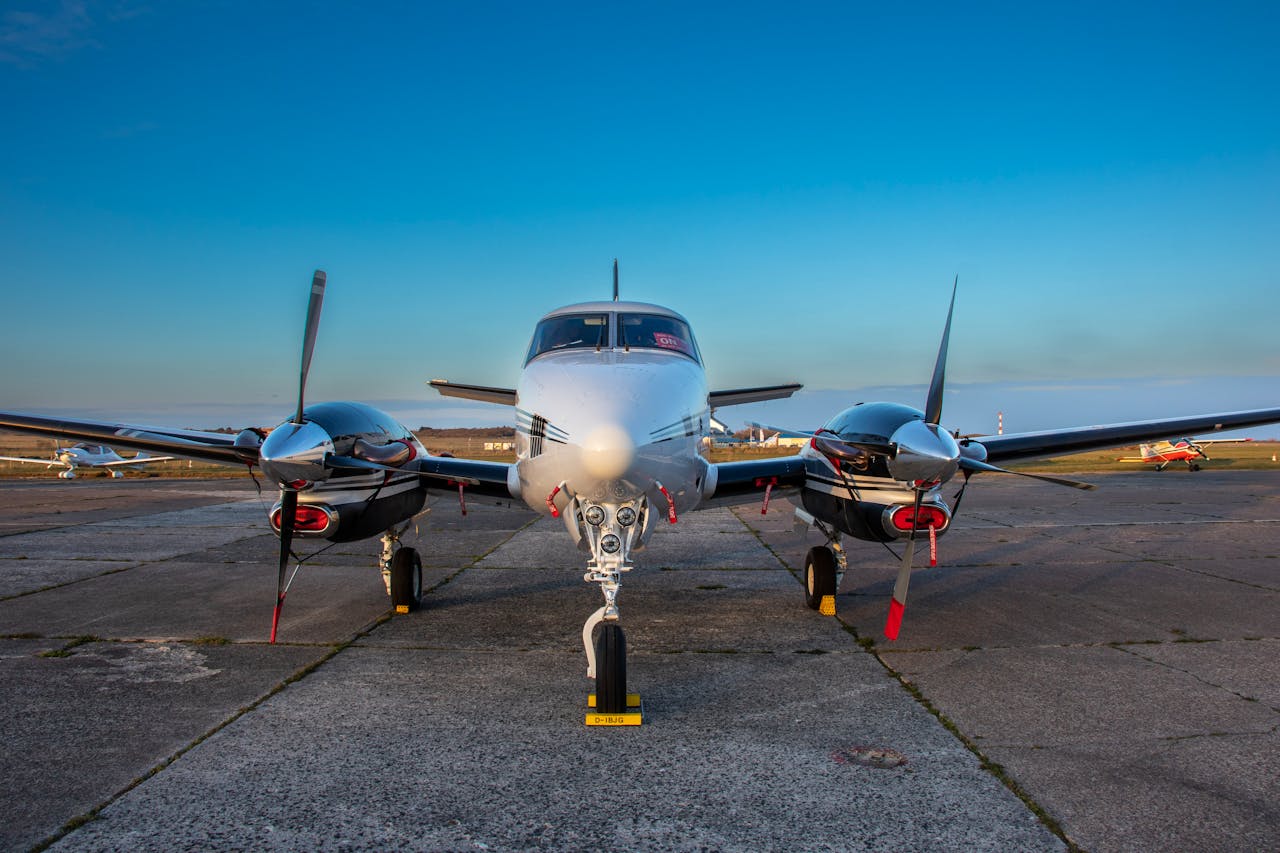In the world ofprivate aviation, the jet is, of course, synonymous with luxury, speed, and status. But there is another category of aircraft that, in many situations, may prove to be a more efficient, economical and intelligent choice: the turboprop, or turboprop aircraft.
In this article we compare turboprops and light and medium private jets to see when it really pays to choose a turboprop over a jet, and for whom it is the ideal solution.
What are Turboprops and the differences with Private Jets
Turboprops, or turboprop aircraft, are aircraft powered by turbine engines that drive a propeller. Compared with private jets, which use jet engines, they have some major differences in performance, fuel consumption and operational functionality.
Turboprops fly at lower speeds, between 300 and 600 km/h, compared to 700-900 km/h for light and medium jets. However, they consume less fuel and have lower costs. Operationally, turboprops can take off and land on very short or even unpaved runways, which is often impossible for a jet. This makes them ideal for reaching smaller airports, remote locations, islands or mountainous areas.
In terms of range, turboprops cover distances of up to 3,000-3,500 km, so they are perfect for regional or domestic flights. Light jets have similar range, but become more suitable for medium to long flights only as they go up in category (and price).
As for comfort, private jets generally offer a quieter and more spacious cabin, but high-end turboprops-such as the Pilatus PC-12 NGX or the Beechcraft King Air 350i-still provide a very comfortable experience, especially on short flights.
The choice between turboprop and jet thus depends on distance, type of airport, and budget available.

Top destinations for Turboprops
Turboprop aircraft perform best on short or regional routes and to destinations that are not easily reached by jets, mainly for infrastructural or logistical reasons. Their ability to operate on short, unpaved or remote runways makes them the smarter choice in many cases.
Here are some examples of ideal turboprop destinations:
Mountain Airports
Many alpine or high-altitude airports have short runways and variable weather conditions. Turboprops, due to their maneuverability and low landing speed, are perfect for:
- Courchevel (France)
- St. Moritz (Switzerland)
- Innsbruck (Austria)
Islands with limited runways
To reach smaller islands or locations with reduced airport infrastructure, the turboprop is often the only option. Some examples:
- Elba, Lampedusa and Pantelleria (Italy)
- Ibiza (secondary airport), Menorca (Balearics)
- Greek islands such as Mykonos, Paros, Naxos, Skiathos
Secondary or remote airports
If you want to avoid large hubs to land near your final destination, turboprops allow you to land and take off at smaller local airports.
- Annecy (France)
- Bolzano (Italy)
- Sion (Switzerland)
- Kassel or Sylt (Germany)
Routes in Europe ideal for turboprop aircraft (turboprop)
On the European continent, turboprops are often chosen for short routes between cities or exclusive locations not served by scheduled flights. With the possibility of rapid takeoff, landing on short runways, and low cost, turboprop aircraft are an ideal solution for business travel, luxury tourism, or connections to secondary airports.
Here are some examples of frequent routes where turboprop is featured:
- Milan – Florence (less than 1 hour)
- Nice – Saint-Tropez
- London to Paris (Biggin Hill to Le Bourget or smaller airports)
- Zurich – Lugano
- Athens – Santorini
How many types of turboprop aircraft are there?
Turboprop aircraft are distinguished primarily by size, passenger capacity, range, and utilization. Knowing these categories helps to understand which aircraft is best suited to different travel needs, whether in the private or commercial sector.
-
Light Turboprop Aircraft
They are small aircraft with a typical capacity of 4-8 seats. They are popular for short and medium flights, especially in general aviation or private and business use.
Famous examples:
- Cessna Caravan
- Pilatus PC-12 (more compact versions)
These models offer low fuel consumption, low operating costs and the ability to operate on very short or unpaved slopes.
-
Medium Turboprop Aircraft
Aircraft with a capacity of 8-15 passengers, often used for regional charter or business flights. They are a good compromise between comfort, performance, and operating costs.
Famous examples:
- Beechcraft King Air 350
- Pilatus PC-12 (wider versions)
They offer a more spacious cabin, sufficient range for regional flights, and superior comfort while maintaining flexibility of use.
-
Heavy turboprops
These are larger aircraft with capacities that can exceed 50 passengers. These aircraft are mainly used for regional commercial flights or military and specialized purposes.
Famous examples:
- ATR 42/72
- Bombardier Q400
These turboprops are more efficient on medium-haul routes and often replace small regional jets or larger airliners.
The most popular turboprops
In the private hire sector, the most popular turboprops are light and medium turboprops, such as the l Beechcraft King Air 350i and Pilatus PC-12 NGX, which combine versatility, range and comfort suitable for regional travel.
If you are considering renting a turboprop, it is important to consider the number of passengers, the distance to be covered, and the type of airports you plan to use. These factors will guide you to the most suitable model.
Jet or Turboprop? Contact PrivateJetFinder to choose the best aircraft
The choice between a turboprop turboprop airplane and a private jet depends on multiple factors: the distance of the flight, the type of departure and arrival airport, the available budget, and the need for comfort and speed.
Turboprops are ideal for those seeking an economical, flexible option capable of reaching destinations with short runways or limited infrastructure. In contrast, private jets offer superior performance in speed, range and comfort, perfect for longer flights and demanding customers.
To guide you in your choice and find the best solution for your needs, PrivateJetFinder is the ideal partner. Contact us for a personalized quote, and we’ll recommend the perfect aircraft, whether you prefer the convenience of a turboprop turboprop plane or the power of a jet to reach your next destination in comfort.
FAQ – Frequently asked questions about turboprop turboprop aircraft

1. Are jets or turboprop turboprop aircraft more dangerous?
– Both types of aircraft are extremely safe and subject to rigorous maintenance and certification standards. Safety depends more on the operator and flight conditions than on the type of engine. Turboprops are often preferred for operations on shorter or less well-equipped runways, while jets offer superior performance on longer routes.
2. What is the fastest turboprop?
– Among the fastest turboprops we find the Piaggio P.180 Avanti II, which can reach speeds up to about 700 km/h, higher than many conventional turboprops. The Beechcraft King Air 350i is also known for its good speed performance, with about 580 km/h.
3. Can I also transport my dog (or cat) on board a chartered turboprop turboprop aircraft?
– Yes, many charter flight operators allow pets to be carried on board, subject to prior notice and compliance with safety and comfort standards for the animal. It is always recommended to notify in advance and check specific conditions with the operator.
4. How to rent a turboprop for a short trip?
– To rent a turboprop turboprop plane quickly and easily, we recommend you contact PrivateJetFinder, which will support you in choosing the most suitable model and arranging the flight, ensuring a personalized and professional service.



